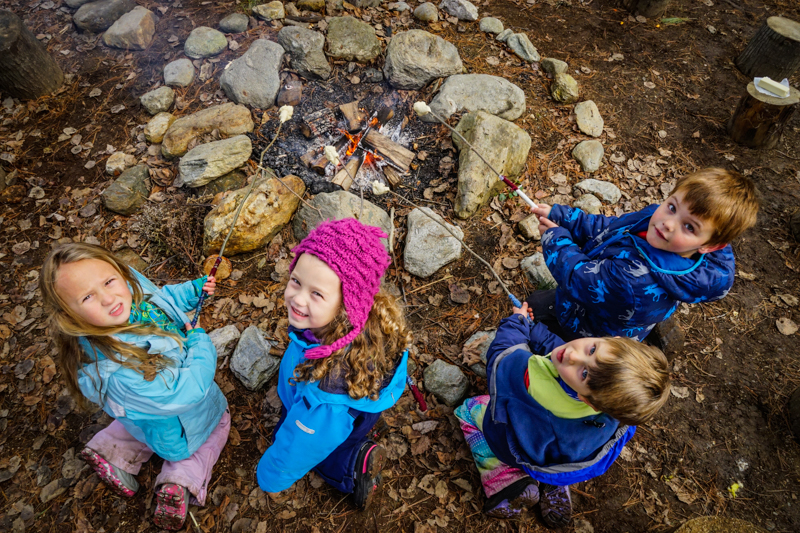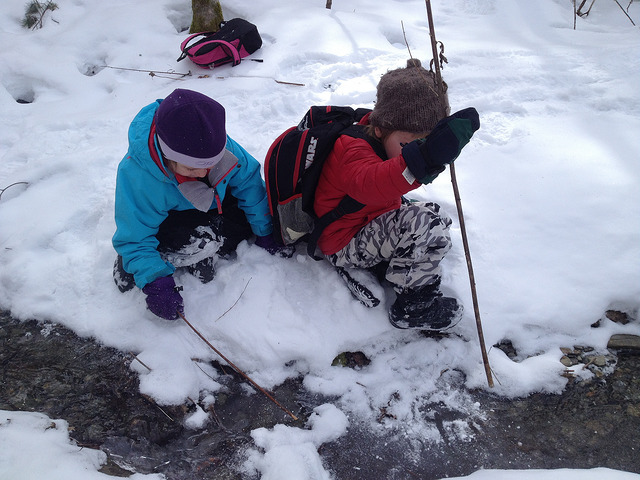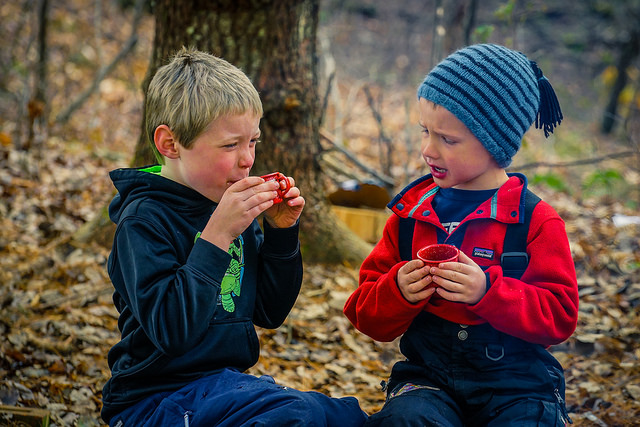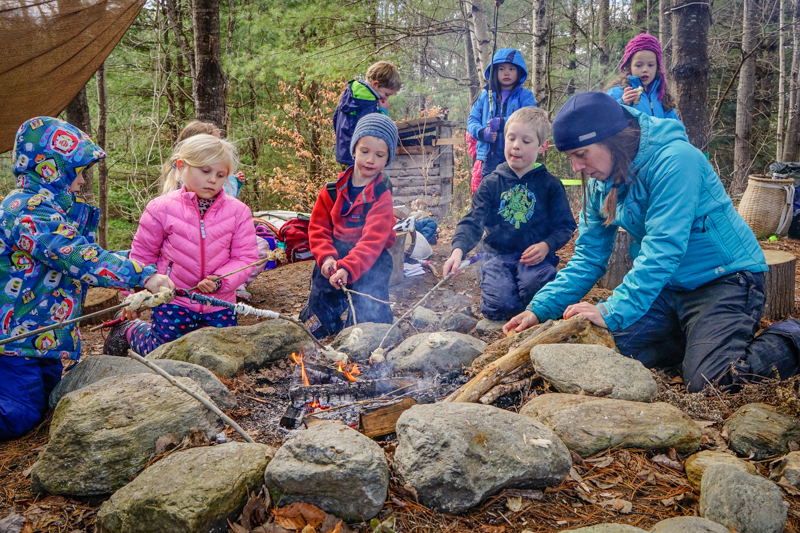Creating Community by Learning With Nature

By Amy Butler
* This post was written on October 28 for the North American Association for Environmental Education (NAAEE) Blog
On a cold and blustery October morning in northern Vermont, 15 public preschool children tumble about their indoor classroom space getting ready for a morning in the forest. Winter coats, neck warmers, snow pants, mittens and boots are strewn about. Children are learning the importance of proper sequencing to get dressed for the early winter weather outside their classroom door. The teachers guide their students towards the dressing chart: First snow pants, THEN boots. And when the mittens are ready to go on these small hands you hear the chorus of “Ask two friends first!” followed by “Hoods are not hats!

Once all the children are outdoors and the magic number is counted, the journey to their ECO base camp begins. Small bodies climb a mountainous hill and one by one the children are absorbed into the forest behind their school to learn and play for the next two to three hours.
This is a typical scene, every week, in 10 public schools in the central Vermont area. For the past 7 years public school teachers in grades Pre-K through 6th have taken to teaching in their local green spaces with the support of the ECO program(link is external) and the teaching staff at the North Branch Nature Center in Montpelier, Vermont. ECO stands for Educating Children Outdoors. The “outdoor” part of ECO can be a forested space or along the village and city streets of these Vermont communities. ECO is inspired by nature kindergartens in Scandinavia, Forest Schools in the UK, the Nature Based Mentoring movement here is the US, and, most importantly, the place we live in. Over the years public school teachers have worked in partnership with North Branch Nature Center to design a place-based curriculum for their students based on the landscape and the changing seasons of Vermont. Even though we live in the second most rural state in the nation, today’s children still spend a large percentage of their day in front of screens or participating in an adult directed activity. Our Green Mountain state is 78% forested and our economy is dependent on our landscape and the health of it, therefore a creating a nature immersion program has become a unifying experience at school for children and their families. ECO has become a reminder to us all that the natural world is an important part of our lives, no matter where we live.

How does this partnership work? First, we are very fortunate that our area public schools highly value the benefits children receive from spending extended periods of time outdoors in wild spaces. Schools contract our staff to help them create and practice routines for learning outdoors safely. We plan with teachers and provide lesson plans and ideas for direct experiences in nature that tie back to their classroom goals. Some schools choose to hire us for the entire school year and ECO staff head into the woods with teachers every week. Other schools ask us to help them once a month as they become more comfortable with teaching outdoors. In the summer, teachers can be a part of our weeklong ECO Institute and dive into the pedagogy and routines of learning with nature. By the end of the week, teachers walk away with skills to start their own nature immersion program at their school.
As ECO has developed, we have found that the students’ shining moments were those that came from the experiences that support social and emotional learning (SEL). The strong foundation of SEL that is built in the forest is constructed with authentic play in nature, experiences that build agency and resiliency, and opportunities to care for each other and the environment. The natural world truly becomes a co-teacher, and the need to meet math and science expectations comes in second to the richness of practicing empathy, caring for others and developing a sense of place.
As an educator in this growing field of nature based learning, I have learned that in order to bring this type of experience into our public schools we must consider the community, its culture and the place we call home. The language we choose to use to describe this practice of teaching outdoors has to be accessible and meaningful to all. Here in Vermont we consider the families who hunt or farm, the child who lives on the top floor of an apartment building, the child that has never climbed a tree, the newly settled family, or the child who moves every three months. Nature is inclusive. Nature is for everyone, and, in the end, can be healing for every child and adult.
This past week as a teacher tended the morning fire, children got ready for snack and story. Sitting in the circle with their peers, a child shared their thought.
“I like coming home.”
The fire crackled.
“You mean in the forest?” the teacher asked.
“Yes, home in the forest.” The child replied.
For more information about ECO:
https://northbranchnaturecenter.org/educating-children-outdoors-eco/


